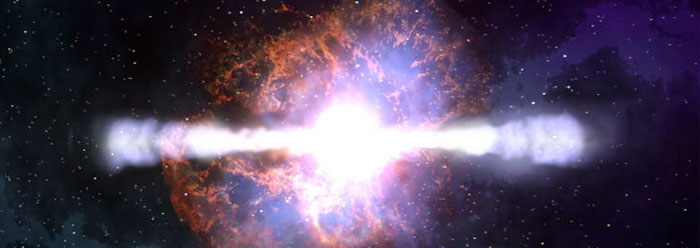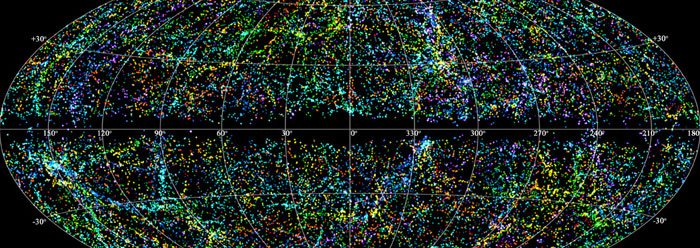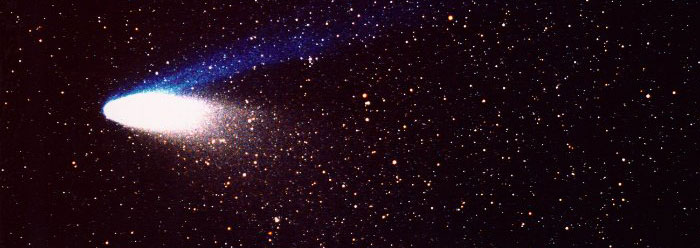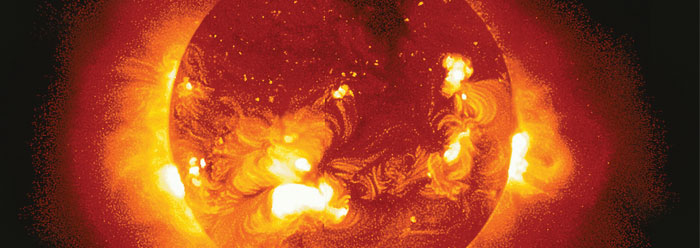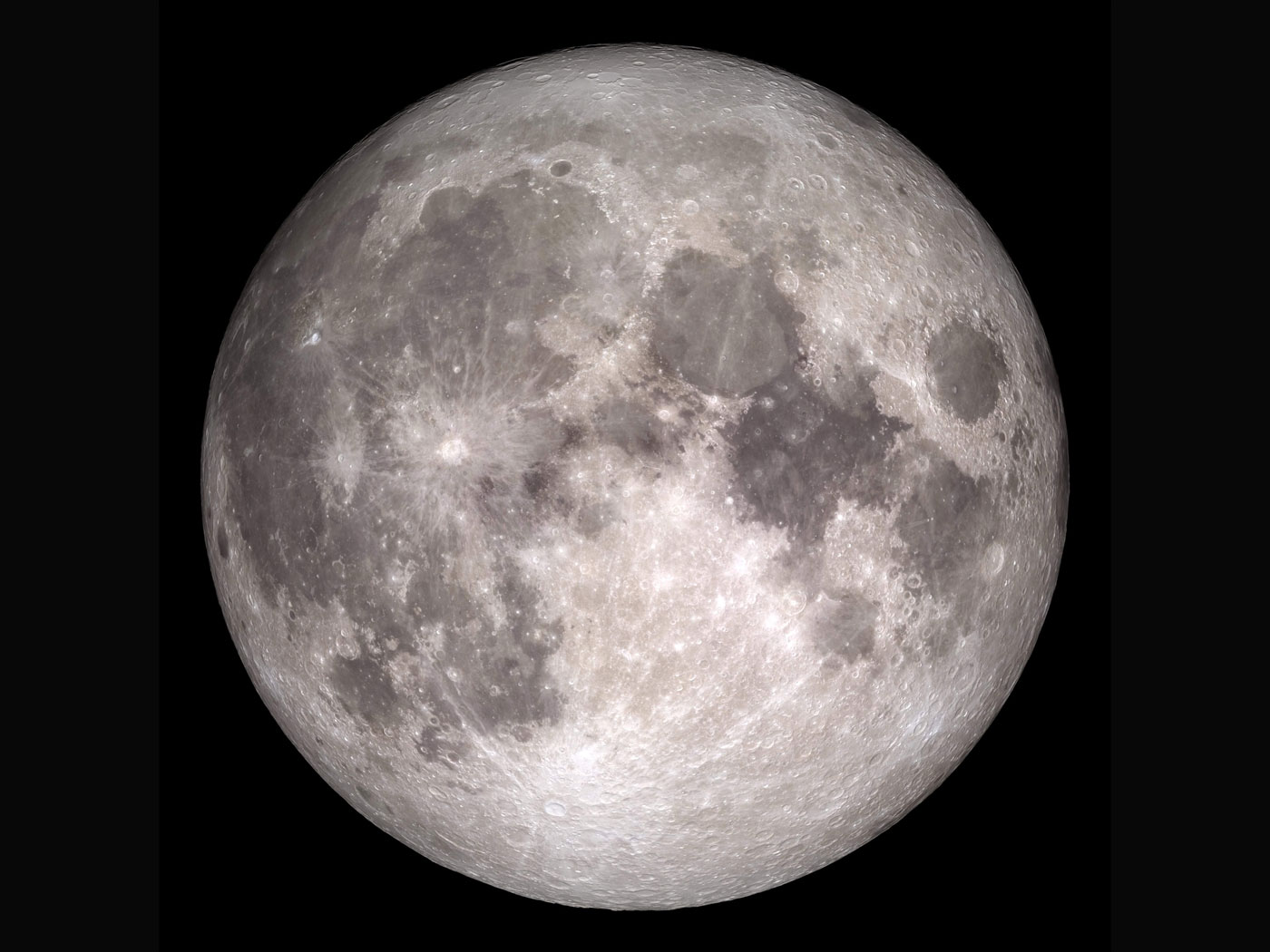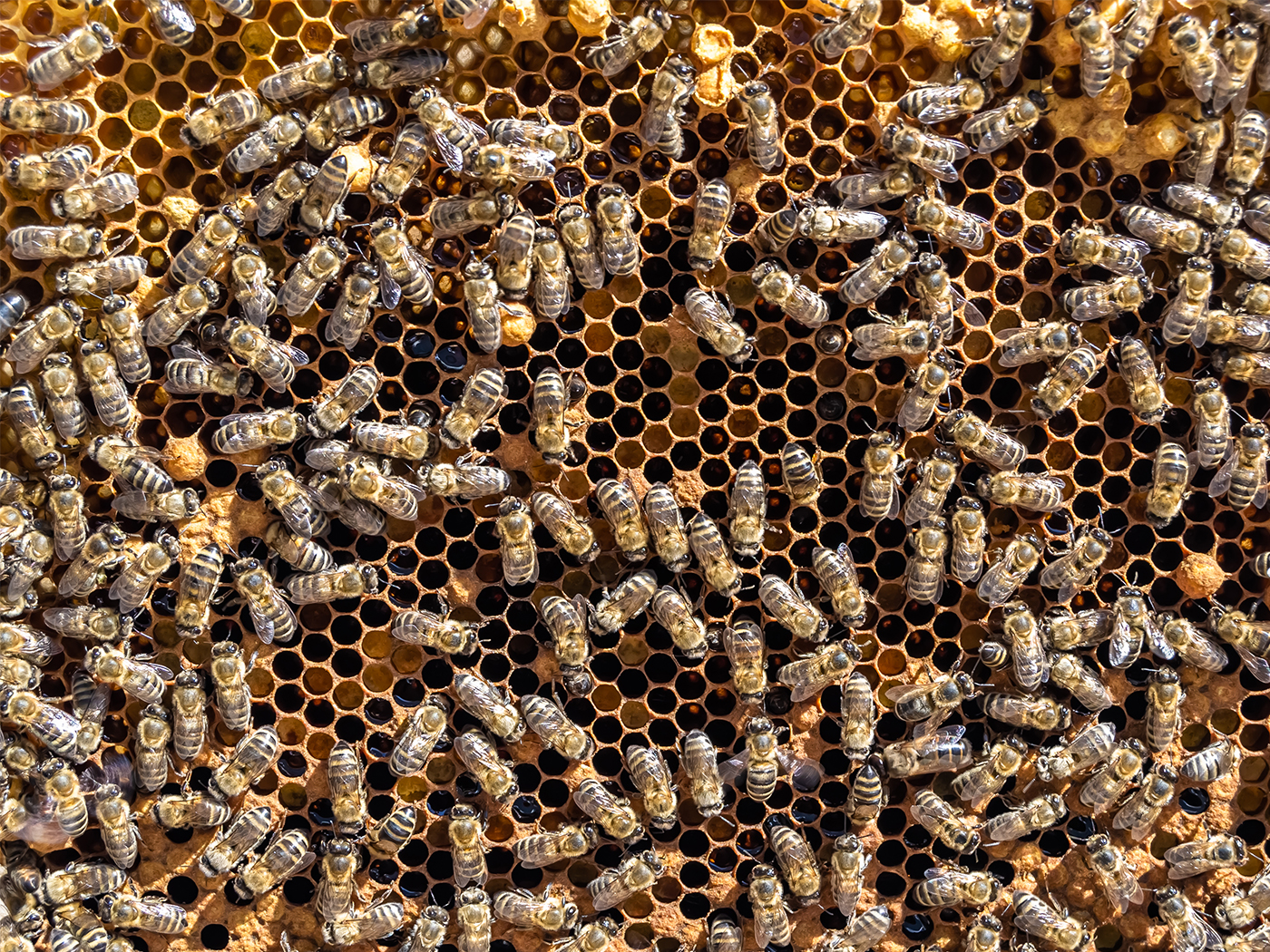In modern cosmology, one of the most important numbers is the current value of the so-called "Hubble parameter," also known as the Hubble constant, designated by the symbol H0. This number indicates the apparent expansion rate of the universe, expressed in units of velocity per distance—specifically kilometers per second, per megaparsec (a megaparsec being the distance of about 3.3 million light years). A new study indicates that two different methods of estimating this number yield contradictory results.1,2
One method is the direct measurement: calculate the distances and presumed velocities of distant objects, which are used to estimate the value of the Hubble constant. For this method to work, a number of assumptions must hold, including the premise that the true, intrinsic brightnesses of these objects are known. Type Ia supernovae, a special classification of exploding stars, are often used as the benchmark "standard candles," since their intrinsic brightnesses are thought to be discernible from the time at which their maximum brightness occurs.
The second estimation method is an indirect attempt to infer the Hubble parameter value from the cosmic microwave background (CMB) radiation, which Big Bang cosmologists interpret as an afterglow from a time about 400,000 years after the Big Bang. This is achieved by constructing a theoretical model (in this case, the Big Bang model) involving a number of parameters whose values are left unspecified. By analyzing the CMB, Big Bang cosmologists attempt to infer the most likely values of these parameters, including the Hubble constant itself. Note that this method implicitly assumes that the Big Bang model is correct.
This new study, using the direct method, obtained an estimated value of the Hubble parameter of 73 km/s/Mpc, which is significantly higher than the second method's value (inferred from the CMB) of 67 km/s/Mpc. Even in the analysis of the Planck data published in 2014, there was an acknowledged "tension" between the direct and indirect estimates of the Hubble constant.3 This new study confirms that tension.
The paper authors state that a "significant disagreement" between the different estimates for the Hubble constant would "provide evidence for fundamental physics beyond the standard model, such as time-dependent or early dark energy, gravitational physics beyond General Relativity, additional relativistic particles, or nonzero curvature."
Of course, there is another possibility that these Big Bang cosmologists have ignored: Perhaps the Big Bang model itself is simply wrong. Contradictions between observations and the Big Bang model are never really allowed to count against the Big Bang. Rather secular scientists optimistically interpret them as evidence for some new and exotic physics. In some cases, there may indeed be some previous evidence for new physics. For instance, both creation and secular cosmologists have speculated that our current understanding of physics may need to be modified to account for certain observations.4,5 But in other cases, the only "evidence" for speculative new physics is that today's version of the Big Bang can't explain the data without it! This is not the first time observations have contradicted Big Bang expectations, nor will it likely be the last.6,7,8
The Big Bang model is in serious trouble and is, figuratively speaking, held together with duct tape and chewing gum. Why then do so many Christians feel compelled to uncritically accept it, especially when its alleged billions of years contradict the clear Scriptural teaching that "in six days the LORD made the heavens and the earth, the sea, and all that is in them."9 A contrived explosion is not the universe's cause. God spoke the universe into being and stretched out the heavens.
References
- Reiss, A. et al. 2016. A 2.4% Determination of the Local Value of the Hubble Constant. Astrophysical Journal. Submitted to arXiv.org on April 5, 2016, accessed 4/12/2016.
- Castelvecchi, D. 2016. Measurement of Universe's expansion rate creates cosmological puzzle. Posted on nature.com April 11, 2016, accessed April 12, 2016.
- Ade, P. et al. 2014. Planck 2013 results. XVI. Cosmological parameters. Astronomy & Astrophysics preprint. Archived at arxiv.org, accessed April 12, 2016.
- Hartnett, J. 2007. Starlight, Time, and the New Physics. Australia: Creation Book Publishers, 34-54.
- Reich, E. S. Alternate theory poses dark matter challenge. Nature News Blog. Posted on nature.com February 23, 2011, accessed April 21, 2016.
- Hebert, J. 2013. The Planck Data and the Big Bang. Creation Science Update. Posted on ICR.org April 3, 2013, accessed 4/12/16.
- Thomas, B. Big Bang Fizzles under Lithium Test. Creation Science Update. Posted on ICR.org September 22, 2014, accessed April 12, 2016.
- Hebert, J. 2015. A Cosmic 'Supervoid' vs. the Big Bang. Creation Science Update. Posted on ICR.org May 7, 2015, accessed April 12, 2016.
- Exodus 20:11.
Image credit: Copyright © 2015 D. Berry/NASA/GSFC. Adapted for use in accordance with federal copyright (fair use doctrine) law. Usage by ICR does not imply endorsement of copyright holder.
*Dr. Hebert is Research Associate at the Institute for Creation Research and earned his Ph.D. in physics from the University of Texas at Dallas.
Article posted on April 25, 2016.




